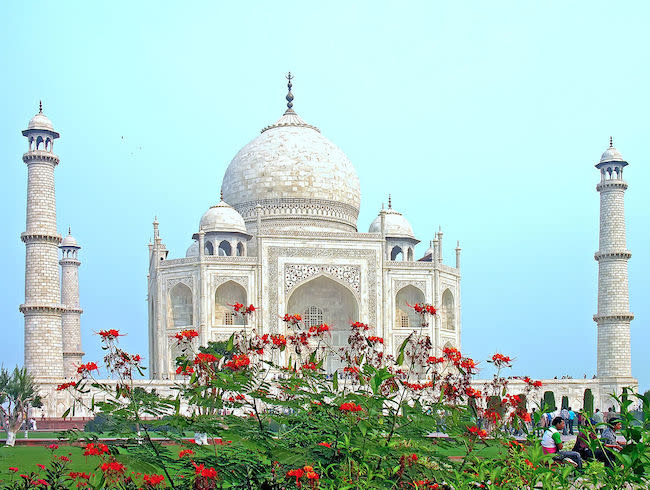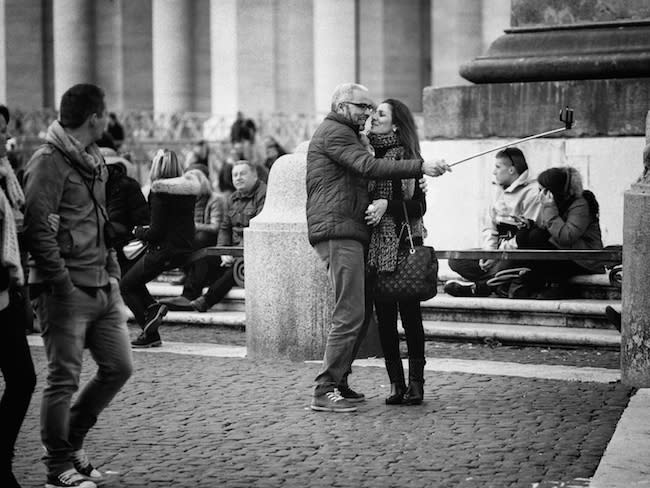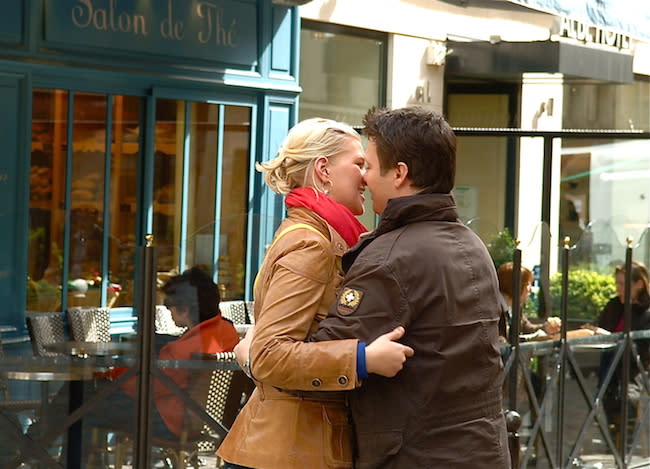6 countries that celebrate Valentine’s Day differently
Yes, it’s coming. February 14th is coming. Loved by most, hated by some. Valentine’s Day is the day of romance, where couples start making reservations for a fancy restaurant, and buying gifts and heart-shaped cards for their significant other.
However, Valentine’s Day is not just about giving chocolates to loved ones. Each country has a significant way that they celebrate Valentine’s Day, while some do not celebrate it at all. Here are some countries that spend Valentine’s Day differently than the generic activities of sending love letters, exchanging gifts or flowers, eating in fancy restaurants and having a romantic night in a hotel.
India
Red flowers in front of the Taj Mahal (Photo: Dennis Jarvis via Wikimedia Commons)
A day of romance is just not enough. In India, it’s not Valentine’s Day— it’s Valentine’s Week. Counting up to the special day, Indians enjoy a week of joy and romance. On 7 February, Indians celebrate Rose Day, starting the week with a bunch of roses and a candle-light dinner. If anyone’s looking for a day to propose to their girlfriend or boyfriend, the second day of Valentine’s Week, Propose Day, might be the right time to pop the question. On the third day, people can enjoy as much chocolate as they want without anyone judging them as it is Chocolate Day. Following Chocolate day is Teddy Day, where loved ones impress each other with cutest teddy bear then promising them love on 11 February, Promise Day. February 12th marks Kiss Day, on which people will give their first kiss followed by a hug on Hug Day, 13 February. After all that comes, D-Day—Valentine’s Day on 14 February, when people shower their beloveds with love and gifts.
Nepal
A couple taking a selfie in Rome, Italy (Photo: Andreas Schalk via flickr)
In Nepal, Valentine’s Day is called Prem Diwas (प्रेम दिवस) or Pranaya Dwas (प्रणय दिवस). Nepalis started celebrating Valentine’s Day starting from late ’90s, when the development of media such as TV and radio started spreading across Nepal. People who celebrate Valentine’s Day have definitely increased over time due to the rapid Westernization; however, it does come with some downside as one of the major problems on this day is the students ditching school for the purpose of going on dates with their significant other. More specifically, couples tend to ignore people around them while expressing their affectionate feelings towards one another and in a country like Nepal, these actions are considered as a serious offense and misbehavior in public. In fact, not everyone is allowed to celebrate this day. Students in college are free to celebrate the way they want, but students in high school are not normally allowed to.
Pakistan
A fallen heart-shaped candy (Photo: Irina Patrascu Gheorghita via flickr)
If anyone’s planning to travel to some place nice with your loved one to celebrate Valentine’s Day, Pakistan might not be a romantic choice. According to Breitbart, the Muslim-majority country’s Minister for the Interior Chaudhry Nisar Ali Khan has ordered a ban on Valentine’s Day in the capital city of Islamabad as it is a insult to Islam. In previous years, the Islamist political party Jammaat-e-Islami disrupted Valentine’s day celebrations, which encouraged people to secretly celebrate it instead. This year, celebrations are officially banned.
South Korea and Japan
Locks of love that expresses promises between loved ones in South Korea (Photo: Raíssa Ruschel via flickr)
Breaking the stereotypes of Valentine’s Day, men of South Korea and Japan aren’t the ones impressing their girls. On this day, girls are the ones showering their loved ones with gifts and chocolate, and treating them to a romantic dinner.
In Japan, there are different types of chocolate women give to others. A woman may gift ‘giri-choko’, which means ‘obligation chocolate’ to men without any romantic interest, a ‘chō-giri choko’ or an “ultra-obligatory” chocolate given to people so that they don’t feel left out. To people who have more sentimental value, there’s the ‘honmei-choko’, which means ‘favorite or true feelings chocolate’, gifted to their lovers or to even show more love ‘honmei-choko’ made specially home-made by the women themselves and only given to lucky men.
But don’t worry girls, a month later, it’s White Day. On 14 March, guys are suppose to return the love they’ve received on Valentine’s. If anyone’s lonely and doesn’t have anyone to celebrate Valentine’s Day or White Day, South Korea has a day for them. On the following month, April 14th, it is Black Day. This day is dedicated for the singles, on which singles meet up at restaurants to eat ‘jajangmyeon’, a dish with white Korean noodles with black bean sauce, to celebrate their single life or console each other for being single.
France
Couple expressing affection to each other along the streets of Paris, France (Photo: Pedro Ribeiro Simões via flickr)
Everyone knows that France is the country of love. So it’s no surprise that they do something extra special on this day. Before just taking their dates to a fancy restaurant and having a romantic evening, French people used to have a tradition called “une loterie d’amour”, which translates to “drawing for love.” This tradition involved single men and women of all ages in which they entered houses that faced opposite each other and took turns calling out to one another until they were paired off. If the men didn’t like their match, they would simply leave the woman for another woman. For the women who didn’t get paired up, they got together for a ceremonial bonfire where they tossed pictures and objects of the men whom rejected them. But this tradition was soon banned by the French government because of how rowdy and uncontrollable the whole event usually got.
How do you celebrate Valentine’s Day? Is there some traditions your country does specifically to celebrate this occasion?
- by hongbin.j
The post 6 countries that celebrate Valentine’s Day differently appeared first on migme.








